THE ALIEN: SERGEI VASYLEVICH RACHMANINOFF (1873-1943)
If you imagine yourself who finds himself, down a dark and lonely street in the middle of the night, a very tall man, with a broad physical build, very short hair, large and separated knuckles (which denote aggressive personality according to Conan Doyle), enormous hands, with very marked features of the face, wide lips and with a hieratic expression, with a face of “few friends”, dressed elegantly.
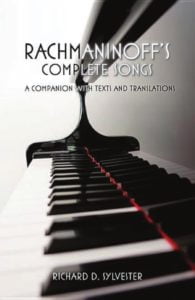
If this man approaches you in those circumstances, at the very least, I would be afraid. At that moment, he asks: What time is it, please? Then you would calm down a lot, and he would observe a slight smile on Rachmaninoff’s face, almost like that of the Mona Lisa“.
Sometimes the appearances deceive. Many pianists need to move their body a lot to give lyricism to their interpretations.
However, others are like rocks in front of a piano, and yet still get performances much deeper and more lyrical than the previous ones. This is the case of Rachmaninoff, and also of Arthur Rubinstein.
Best Sheet Music download from our Library.
In the book of Harold C. Schönberg “The Great Pianists”, in a chapter titled “the puritan”, it is said:
“(…) The tall, dour, lank, unsmiling figure of Sergei Rachmaninoff, with its seamed face and head of close-cropped (almost shaved) hair, invariably reminded the public of a convict on the loose.”

Rachmaninoff in concert.
This phantasmagorical character that the figure of Rachmaninoff produces, this impression aural, has a faithful reflection in his music.
At conceptual levels, something The same is true of Liszt. While Liszt reflects on us a music full of mythological fights, conflicts between life and death, Rachmaninoff shows a ghostly, ironic personality, like someone who thinks that these deep thoughts can be better expressed in a way ironic, sometimes humorous, reflecting it in a music full of contrasts, almost appearing superficial.
But it is quite the opposite, what he actually demonstrates is honesty and naturalness, evidence of being a primary music that is born from the heart. Precisely there is the Rachmaninoff’s magical personality.
Its music, sincere in itself, it does not obey objectionable musical tendencies musically, Rachmaninoff belongs neither to romanticism nor to classicism nor to post-romanticism. Rachmaninoff has always been accused of being a conservative, of anti-novel.
Quite the opposite of what is thought: You have to be brave to compose in that style, while they were already making their first steps into music in entirely new languages. And it is that the difficulty of classification of Rachmaninoff’s music within a period is totally logical since his music is so personal to him, so born from the heart, which does not require the use of new resources or pursues originality in language.
Although we can say that his music is typically Russian, he always argued that he never proposed to make Russian music, but his music is like that because he is So.
Rachmaninoff was always very reluctant to reveal his source of inspiration. About his creative process, he used to say these words: “I hear the music in my head. When the music stops, I stop writing.”
He once recounted to a journalist that his inspiration in many cases came from sources literary or pictorial. It is known that “The Isle of Dead” was composed after observing some paintings by Arnold Böcklin with the same title. In this same painter, the Studies-Tableau of him are inspired. But Rachmaninoff was very insistent that his sources of inspiration were not more than inspirations, and not previous programs to develop the pieces, except in one piece:
The “diabolical” study in La minor Op.39 n.6, one of the three that he recorded, and that as he himself commented to Respighi in a letter, is the musical expression of the tale popular fairy tale “Little Red Riding Hood”, of which he is also participate in the Prokoffian “Diabolical Suggestion”.
Please, subscribe to our Library.
If you are already a subscriber, please, check our NEW SCORES’ page every month for new sheet music. THANK YOU!
But after a first analysis, it is clear to deduce that there are two leitmotifs that appear and reappear in Rachmaninoff’s music:
On the one hand the sound of bells from his early years in St. Petersburg, taking the maximum expression of him in “The bells”, his favorite of among his compositions. We can also quote the prelude Op.32 N.3 in My biggest.
On the other hand we must talk about Russian Orthodox choral music, which made a great impression on him, as did the music of North America, of which we can find traces in numerous pieces, in special in the Rhapsody on a Theme by Paganini, which conjugates music American with his personal Russian flair; and of course, in his room concerto, of which the second movement is inspired by a spiritual black.
Rachmaninoff shared with his friend Feodor Chaliapin the firm conviction that a piece always had a unique climax. This interpretive method consisted of determining in each piece what the climax is, and everything In addition, each “p” or each “ff” must lead to that climax, or come out of it.
It is an axis on which the interpretation is based of the piece, a spotlight placed exactly in the ideal place, which illuminates the interpretation as if it were light in a pictorial creation.
The method of Rachmaninoff’s study consists of working on a piece of music as if you were the composer yourself, dividing the study into different phases.
Expressing it in his own words: “You must take the work apart, peer into every corner, before you can assemble the whole” . Of course, always keeping a logic with about the “turning point,” or climax.
The worst review that he himself could do at the end of a recital is to forget that point culminating. It made no difference to the interpretation of this or that passage were great, as he himself recounted: “either the whole made sense, or nothing did”.
This is a globalizing conception of a piece of music, means putting oneself in the place of the composer and not limited to being an interpreter, is the difference between the architect and the mason. The mason builds the brick house brick, the architect has it all in his head.
To Rachmaninoff only two or three conductors understood truly his work: Eugene Ormandy (New York Philharmonic), Leopold Stokowsky (Philadelphia P.), and Dimitri Mitropoulos.
Currently tends to underestimate Rachmaninoff’s recordings, to classify them within an interpretive style belonging to a period historical-musical. It tends to “romanticize” the music of Rachmaninoff, to make numerous ritardandos in the most lyrical passages, to play the slower music of him.
This is supposed to be a trend of the current musical thought, but nevertheless I advocate because it is about a misconception. A big mistake. All these piano players that play so their music, they don’t understand Rachmaninoff at all. Being lovers and studious of his music and his figure, we would give these recommendations of practices for pianists trying to play and understand his music:
1º.- The most important is to establish the climax of the piece, its high point. Does not have why be a short passage, nor does it have to be in “fff”, it is simply the harmonic and formal climax. It has to be studied formally the piece in a first stage.
2º.- The accents. Rhythm is essential at Rachmaninoff, you have to keep it up from start to finish unless otherwise stated. Forget the ritardandos and mannerist sensitizations at each end of phrase. You should always accentuate the strong part of each measure, in addition to the corresponding accents as written in the music sheet. You have to respect the score, looking for editions that are not reviewed by anyone other than Rachmaninoff himself.
3º.- The contrasts. There must be diabolical, phantasmagorical contrasts, it must give “fear”, between the Forte and the Piano. The fabulous technique of Rachmaninoff allowed him to make such contrasts at a speed higher.
4º.- Many Sometimes melodies are interspersed in a great way, playing with the voices. These melodies have to be heard as if it were a fugue, as as Rachmaninoff does in his recordings.
5º.- Stretch the hand to the max The only way for Rachmaninoff’s music to sound to Rachmaninoff is to use fingerings apparently “impossible” because of the extent they entail, but with the study are becoming affordable. The jumps think of them as extensions. The fear of jumping is only in your head, not in your fingers. reject editions with finger crossings and special fingerings for hands little.

Rachmaninoff’s hands
6º.- You don’t have to get scared or self-conscious hearing how quickly Rachmaninoff plays this one or that passage. Rachmaninoff only existed one, let’s not try to imitate the verbatim what he does, but if he does it quickly, we must try to do it like this. On the other hand, do not fall into the error of consider Rachmaninoff as a “machine”: what He plays fast, showing enormous talent and giving balance to the whole piece, because his technique allows it, let’s not be envious, let’s be humble and recognize our limitations!
Rachmaninoff himself was full of contradictions and was never happy with his interpretations of him, he even went through a period of depressions, from which he got out thanks to the help of psychiatrist Dr. Nikolai Dahl, and to whom he dedicated the second concert to him.
Must be realized the enormous talent of Rachmaninoff, playing his compositions. It is about perceiving something spiritual, something that cannot be studied or to say in words, to understand the austere Russian spirit, ironic, intelligent, phantasmagorical, of Rachmaninoff. Getting to cry listening to his Humoresca in G Op.10 n.5, or coming to hate his second concerto for piano and orchestra (comparing it with his other concertos, of course), they are not contradictory attitudes.
If we pretend to introduce you to a deeper Rachmaninoff than the Rachmaninoff that fans know, we’d suggest these pieces: Variations on a Theme of Corelli, Sonata No.2 for solo piano, Concerto No. 4 for piano and orchestra, Humoresca… and actually, many, many more, that are not usually played in concert halls due to their tremendous difficulty. Any pianist will recognize that it is much easier to play a concerto by Liszt or one by Chopin, than to start studying one by Rachmaninoff.
Hoping these tips help you, and you end up loving Rachmaninoff like many we already do it. But do not try to believe that you know how to play this or that Rachmaninoff’s piece without first having searched for and heard his recording: you will have big surprises. Hoping that from those clashes between the personality of each one and that of Rachmaninoff himself, visions are born positive and fruitful, and you understand this genius better.
The figure of Rachmaninoff is becoming more and more popular, proof of this and What is nice is the fact that web pages on the Internet containing the name “Rachmaninoff” are the most visited of among all the classical music websites, according to the counters of visits.
To end we’d conclude with two sentences, the first collected from a letter from Rachmaninoff to Medtner, after a series of recitals, about the “Variations on a Theme by Corelli”, and the second a comment that I subscribe:
“Not played them in full once. I was guided by the coughing of the public. When the coughing increased, I would leave out the next variation … In one concert … the coughing was such that I played only 10 variations … My record was 18. However, I hope that you will play them all and that you will not cough”.
“Rachmaninoff was made of steel and gold; steel in his arms, gold in his heart. I can never think of this majestic being without tears in my eyes, for i not only admired him as a supreme artist, but i also loved him as a man” ( Josef Hofmann, “In memory of Rachmaninoff”).
Browse in the Library:
| Artist or Composer / Score name | Cover | List of Contents |
|---|---|---|
| Andrea Vanzo Autumn Intro |
 |
|
| Andrea Vanzo Les Madeleines |
 |
|
| Andrea Vanzo Spring |
 |
|
| Andrea Vanzo Valzer d’Inverno |
 |
|
| Andrés Segovia Classic Album For Guitar Volume 2 |
 |
Andrés Segovia Classic Album For Guitar Volume 2 |
| Andrés Segovia Classic Album For Guitar Volumes 1 to14 |
 |
Andrés Segovia Classic Album For Guitar Volumes 1 to14Andrés Segovia Classic Album For Guitar Volume 2 |
| Andres Segovia Collection Pieces For Solo Guitar |
 |
Andres Segovia Collection Pieces For Solo Guitar |
| Andres Segovia Obras Para Guitarra Vol 1 Preludios Y Estudios |
 |
Andres Segovia Obras Para Guitarra Vol 1 Preludios Y Estudios |
| Andres Segovia Obras Para Guitarra Vol 2 23 Canciones Populares Del Mundo |
 |
Andres Segovia Obras Para Guitarra Vol 2 23 Canciones Populares Del Mundo |
| Andres Segovia- Transcripciones Obras Para Guitarra Vol 3 |
 |
Andres Segovia- Transcripciones Obras Para Guitarra Vol 3 |
| Andrew Hill 21 Piano Compositions |
 |
|
| Andrew Lloyd Webber Sunset Boulevard (Revised Broadway Version) Piano & Vocal Score |
 |
|
| Andrew Lloyd Webber The Music Of The Night |
 |
|
| Andrew Lloyd Webber Think of me (The Phantom of the Opera) | Andrew Lloyd Webber Think Of Me | |
| Andrew Lloyd Webber – All I Ask of You (The Phantom of the Opera) |
 |
|
| Andrew Lloyd Webber – Angel Of Music (Piano, Vocal, Guitar chords) | Andrew Lloyd Webber – Angel Of Music (Piano, Vocal, Guitar chords) | |
| Andrew Lloyd Webber – CATS (Piano & Vocal score) |
 |
Andrew Lloyd Webber – CATS (Piano & Vocal score) |
| Andrew Lloyd Webber – Jesus Christ Superstar (Musical Excerpts Complete Libretto) Lyrics by Tim Rice |
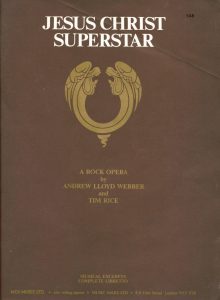 |
 |
| Andrew Lloyd Webber – Joseph And The Amazing Technicolor Dreamcoat The Musical Full Score |
 |
|
| Andrew Lloyd Webber – Joseph And The Amazing Technicolor Dreamcoat The Musical Vocal Selections |
 |
Andrew Lloyd Webber – Joseph And The Amazing Technicolor Dreamcoat The Musical Vocal Selections |
| Andrew Lloyd Webber – Love Never Dies (Piano Book) |
 |
Andrew Lloyd Weber – Love Never Dies (Piano Book) |
| Andrew Lloyd Webber – Love Never Dies Full Vocal Score (Andrew Lloyd Webber) |
 |
Love Never Dies Full Vocal Score |
| Andrew Lloyd Webber – Memory (from CATS) Piano Vocal with lyrics |
 |
|
| Andrew Lloyd Webber – Requiem (the musical) Piano Vocal Score |
 |
|
| Andrew Lloyd Webber – School of Rock |
 |
Andrew Lloyd Webber – School of Rock |
| Andrew Lloyd Webber – The Phantom Of The Opera | ||
| Andrew Lloyd Webber – Unmasked A Memoir (Book) |
 |
|
| Andrew Lloyd Webber – Unmasked The Platinum Collection |
 |
Andrew Lloyd Webber – Unmasked The Platinum Collection |
| Andrew Lloyd Webber “By Jeeves”, the musical |
 |
|
| Andrew Lloyd Webber Anthology |
 |
Webber, Andrew Lloyd – Antholog |
| Andrew Lloyd Webber Jesus Christ Superstar Tim Rice (Deutsche Texte) | Andrew Lloyd Webber Jesus Christ Superstar Tim Rice (Deutsche Texte) | |
| Andrew Lloyd Webber Masquerade from The Phantom of the Opera for Guitar TABS | Andrew Lloyd Webber Masquerade from The Phantom of the Opera for Guitar TABS | |
| Andrew Lloyd Webber Memory (from Cats) for Guitar TABS | Andrew Lloyd Webber Memory (from Cats) for Guitar TABS | |
| Andrew Lloyd Webber Pro Vocal Womens Edition |
 |
Andrew Lloyd Webber Pro Vocal Womens Edition |
| Andrew Lloyd Webber Sheet Music Collection, The – Andrew Lloyd Webber sheet music |
 |
Andrew Lloyd Webber Sheet Music Collection, The – Andrew Lloyd Webber sheet music |
| Andrew Lloyd Webber The Phantom of the Opera for Guitar TABS | Andrew Lloyd Webber The Phantom of the Opera for Guitar TABS | |
| Andrew Lloyd WebberJesus Christ Superstar (Broadway) |
 |
Andrew Lloyd Webber Jesus Christ Superstar (Broadway) |
| Andrew Lloyd WebberThe Phantom of the Opera (Piano Vocal & Guitar) Songbook |
 |
 |
| Androgyne (Mario Leblanc) | ||
| Andy Timmons Anthology |
 |
|
| Andy Jaffe – Jazz Harmony |
 |
Andy Jaffe – Jazz Harmony |
| Andy Laverne – Tons Of Runs For The Contemporary Pianist |
 |
andy laverne tons of runs contemporary pianist |
| Andy LaVerne – Vol. 85 Tunes You Thought You Knew | Andy LaVerne sheet music | |
| Andy Mckee Joyland (Songbook) (Andy Mckee) Guitar TAB |
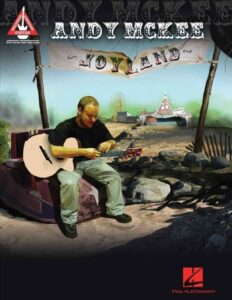 |
Andy Mckee Joyland (Songbook) (Andy Mckee) Guitar TAB |
| Angeles Negros Y Volveré (Alaian Barrière) |
 |
|
| ANGELO BADALAMENTI – (Twin peaks) – Twin Peaks theme easy piano solo | ANGELO BADALAMENTI – (Twin peaks) – Twin Peaks theme | Badalamenti Angelo – Twin Peaks |
| Angelo Badalamenti – Twin Peaks – Love Theme easy piano solo | Badalamenti, Angelo – Twin Peaks – Love Theme | Angelo Badalamenti – Twin Peaks (book) |
| Angelo Badalamenti – Twin Peaks (songbook the music of Twin Peaks) |
 |
Angelo Badalamenti – Twin Peaks (book) |
| Angelo Badalamenti – Twin Peaks Theme (Instrumental) (Musescore File).mscz | ||
| Angelo Badalamenti Twin Peaks – Love Theme (Laura Palmer’s Theme) | Twin Peaks -Love Theme | |
| Angra Rebirth Guitar Songbook |
 |
|
| Angry Birds Theme Song (Piano) |
 |
|
| Animal Crossing Christmas Eve |
 |
|
| Animal Crossing – Christmas Eve (Musescore File).mscz | ||
| Animal Crossing New Horizons – Welcome Horizons Main Theme |
 |
|
| Animals – The House Of The Rising Sun | The Animals – House Of The Rising Sun | |
| Animation Collection, Music From The Movies The (Solo Piano) |
 |
Animation Collection, Music From The Movies The (Solo Piano) |
| Anime Music Collection |
 |
Anime Collection |
| Anime Sheet Music Tsubasa Chronicle |
 |
Anime Sheet Music Tsubasa Chronicle |
| Anna And The King – How Can I Not Love You – Enriquez Joy | ||
| Anna And The King – How Can I Not Love You – Joy Enriquez | Anna And The King – How Can I Not Love You – Enriquez Joy | |
| Anna Karenina 2012 – Curtain (Dario Marianelli) | ||
| Anna Karenina 2012 – Dance with me (Dario Marianelli) | ||
| Anna Karenina 2012 – I Understood Something (Dario Marianelli) | ||
| Anna Karenina 2012 – Kitty’s Debut (Dario Marianelli) | ||
| Anna Karenina 2012 – Ouverture (Dario Marianelli) | ||
| Anna Karenina 2012 – Ouverture (easier version) | ||
| Anna Karenina 2012 – Too Late (Dario Marianelli) | ||
| Anna Nalick – Breathe | ||
| Anne Murray – Day Dream Believer |
 |
|
| Anne Murray Best Of Songbook Piano Vocal Guitar Chords |
 |
Anne Murray Best Of Songbook Piano Vocal Guitar Chords CONTENTS LIST |
| Anne Murray Could I Have This Dance Piano Vocal Musescore File.mscz | ||
| Anne Of Green Gables – Anne’s Theme |
 |
|
| Anne With An E – Marilla’s Theme | Anne With An E – Marilla’s Theme | |
| Annie Lennox The Best Of |
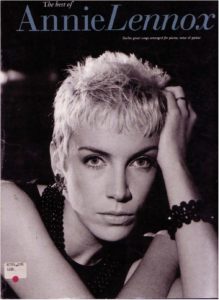 |
Anni Lennox best of songbook |
| Anohni – In My Dreams (piano Solo arr.) euphoria OST |
 |
|
| Another Day In Paradise Phil Collins (Musescore File).mscz | ||
| Another Day of Sun – La La Land OST | ||
| Anouk – Girl | ||
| Anouk – Its a Shame | ||
| Anouk – My Life | ||
| Anouk – Nobodys Wife | ||
| Anoushiravan Rohani Fravorite Persian Pieces for piano Mid-level piano book |
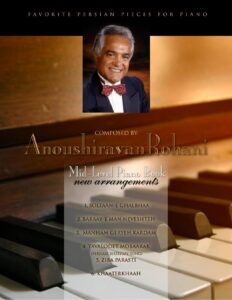 |
Anoushiravan Rohani Fravorite Persian Pieces for piano Mid-level piano book |
| Ansons S. – 6 easy pieces |
 |
|
| Ansons, S. The harmonic garden part I – 24 short Jazz Piano solos |
 |
|
| Anthologie De La Chanson Française 1920 1950 Enrégistrée Book (Français) |
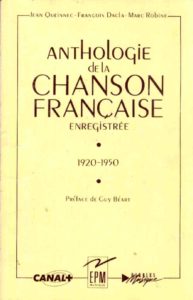 |
Anthologie de la chanson française |
| Anthology for Saxophone (arr. for Eb instr. by Andrea Cappilari) |
 |
|
| Anthology Of American Piano Music Intermediate To Early Advanced Works By 31 Composers |
 |
Anthology Of American Piano Music Intermediate To Early Advanced Works By 31 Composers |
| Anthology of American Song (26 songs collection by representative American Composers) |
 |
|
| Anthology Of Broadway Songs Gold Edition Songbook Piano Vocal Guitar chords |
 |
Anthology Of Broadway Songs Gold Edition Songbook Piano Vocal Guitar chords |
| Anthology Of Children’s Songs Gold Edition Songbook Piano Vocal Guitar chords |
 |
Anthology Of Childrens Songs Gold Edition Songbook Piano Vocal Guitar chords |
| Anthology of French Piano Music – Vol. 2 Modern Composers (1906) |
 |
|
| Anthology of French Piano Music by Isidor Philipp Vol. I (1906) |
 |
|
| Anthology of German Piano Music by Moritz Moszkowski (1908) Vol I Early Composers |
 |
Anthology of German Piano Music by Moritz Moszkowski (1908) Vol I Early Comp |
| Anthology of German Piano Music by Moritz Moszkowski (1908) Vol II Modern Composers | Anthology of German Piano Music by Moritz Moszkowski (1908) Vol II Modern Comp | |
| Anthology of Italian Song of 17th and 18th Cent. (1922) |
 |
|
| Anthology Of Modern Classics For The Piano (32 Compositions, Selected, Edited And Fingered) 1904 |
 |
Anthology Of Modern Classics For The Piano (32 Compositions, Selected, Edited And Fingered) 1904 |
| Anthology of Modern French song (1912) 39 songs with piano accomp. |
 |
|
| Anthology Of Movie Songs Gold Edition Songbook Piano Vocal Guitar chords |
 |
Anthology Of Movie Songs Gold Edition Songbook Piano Vocal Guitar chords |
| Anthology Of Post Tonal Music By Miguel A. Roig Francolí (Book) |
 |
|
| Anthony Braxton Composition Opus 23 M |
 |
|
| Anthony Braxton Composition Opus 23D |
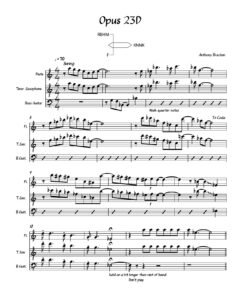 |
|
| Anthropology lead sheet.mscz | ||
| Anthropology Transcription – Sheila Jordan Charlie Parker.mscz | ||
| Anton Bruckner – Fantasy In G Major (Musescore File).mscz | ||
| Anton Rubinstein A Life In Music (Book) Biography by Philip S. Taylor |
 |
|
| Antonio Carlos Jobim Corcovado (Piano and vocal) | Antonio Carlos Jobim Corcovado (Piano and vocal) | |
| Antonio Carlos Jobim The Girl From Ipanema (Piano Solo) Garota De Ipanema | Antonio Carlos Jobim The Girl From Ipanema (Piano Solo) Garota De Ipanema | |
| Antonio Carlos Jobim The Girl From Ipanema (Piano Vocal) Garota De Ipanema | Antonio Carlos Jobim The Girl From Ipanema (Piano Vocal) Garota De Ipanema | |
| Antonio Carlos Jobim Triste (Guitar Solo Arr. With Tabs Sheet Music) | Antonio Carlos Jobim Triste (Guitar Solo Arr. With Tabs Sheet Music) | |
| Antonio Carlos Jobim – Agua De Beber | ||
| Antonio Carlos Jobim – Aguas de Março – Tom Jobim Easy Piano Solo arr | Antonio Carlos Jobim – Aguas de Março – Tom Jobim Easy Piano Solo arr | |
| Antonio Carlos Jobim – Aguas de Março – Tom Jobim Easy Piano Solo arr.mscx | ||
| Antonio Carlos Jobim – cancioneiro (piano,lyrics &guitar chords songbook) |
 |
Antonio Carlos Jobim – cancioneiro (piano lyrics songbook) |
| Antonio Carlos Jobim – Corcovado (Musescore File).mscz | ||
| Antonio Carlos JOBIM – For bossa nova all styles (Guitar Tabs) |
 |
Antonio Carlos JOBIM – For bossa nova all styles |
| Antonio Carlos Jobim – Garota De Ipanema | ||
| Antonio Carlos Jobim – Jobim Cancioneiro Obras Completas |
 |
Antonio Carlos Jobim – Jobim Cancioneiro Obras Completas contents — Antonio Carlos Jobim – Jobim Cancioneiro Obras Completas |
| Antonio Carlos Jobim – Jobim Cancioneiro Obras Selectas (partituras) | Antonio Carlos Jobim – Jobim Cancioneiro Obras Selectas (partituras) | |
| Antonio Carlos Jobim – Luiza Guitar Arr with Tablature |
 |
